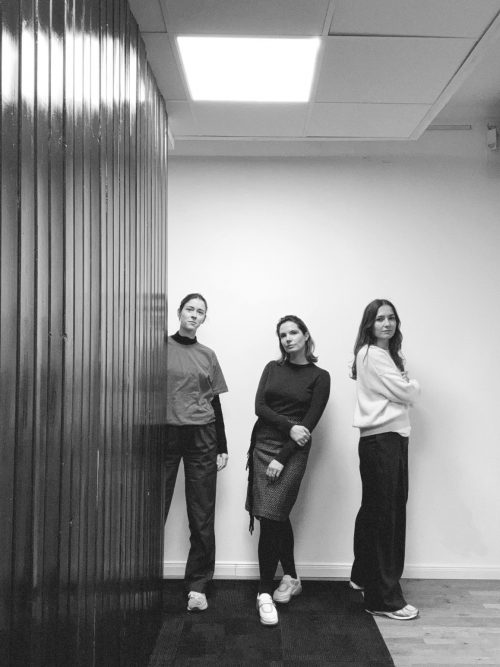
YOSHIDA Momoko
hemi hemi・Typin’ Set 4 "waiting on your car."
Project Info
- 💙 Ritsuki Fujisaki Gallery
- 💚 Ritsuki Fujisaki
- 🖤 YOSHIDA Momoko
- 💜 Ritsuki Fujisaki
- 💛 Ritsuki Fujisaki
Share on

01 installation view #1
Advertisement

02 YOSHIDA Momoko, "hemi hemi•Typin’ #4", 2024, Acrylic on Polyester Fabric, 1370 x 1680 (mm)

03 installation view #2

04 installation view #3

05 YOSHIDA Momoko, "hemi hemi•Typin’ #6", 2024, Acrylic on Polyester Fabric, 1620 x 1520 (mm)

06 YOSHIDA Momoko, "hemi hemi•Typin’ #6", 2024, Acrylic on Polyester Fabric, 1620 x 1520 (mm)

07 YOSHIDA Momoko, "hemi hemi•Typin’ #4", 2024, Acrylic on Polyester Fabric, 1370 x 1680 (mm)

08 YOSHIDA Momoko, "hemi hemi•Typin’ #2", 2024, Acrylic on Polyester Fabric, 780 x 880 (mm)

09 YOSHIDA Momoko, "Pit Lo Ssence #3", 2024, Acrylic on Polyester Fabric, 700 x 840 (mm)

10 YOSHIDA Momoko, "hemi hemi•Typin’ #3", 2024, Acrylic on Polyester Fabric, 1180 x 700 (

11 YOSHIDA Momoko, "hemi hemi•Typin’ #3", 2024, Acrylic on Polyester Fabric, 1180 x 700 (

12 YOSHIDA Momoko, "hemi hemi•Typin’ #7", 2024, Acrylic on Polyester Fabric, 440 x 440 (m

13 YOSHIDA Momoko, "Miya=Morph -aura ring-", 2024, Acrylic on Polyester Fabric, 520 x 445 (

14 YOSHIDA Momoko, “hemi hemi•Typin’ #5”, 2024, Acrylic on Polyester Fabric, 400 x 440 (m

15 installation view #4

16 (From left to right) YOSHIDA Momoko, "Miya=Morph -Flower Hairpiece-", 2024, Acrylic on resin, 98 x 80 x 115 (mm) YOSHIDA Momoko, "Miya=Morph -Boa Ring-", 2024, Acrylic on resin, 85 x 65 x 80 (mm)

17 (From left to right) YOSHIDA Momoko, "Miya=Morph -Boa Ring-", 2024, Acrylic on resin, 85 x 65 x 80 (mm) YOSHIDA Momoko, "Miya=Morph -Paomo Heart Compact-", 2024, Acrylic on resin, 110 x 95 x 75 (mm)
YOSHIDA Momoko's paintings are imbued with the breath of her and those around her. Her process begins with the selection of a particular song, from which she creates an original video inspired by it. After filming the video, a frame is cut out, edited, and made into a painting. In other words, the work passes through three media: music, video, and painting.
Her interest here is not in the content of the music itself, but in its lyricism. The songs chosen are not bound to any particular genre, while only the inspiration from the sound sources of the music files is hired, rather than actual live performances.
This is because packaged music files, akin to white cube itself, are stripped of excess information, which makes the human breath, in other words, the vividness of the music, stand out. Next, she composed her own maquettes, mannequins, and sets, and filmed them. The music evokes her imaginary story, the images are created, and the paintings are made.
It is generally believed that the emergence process of emotion is first evoked, then manifested as a physical reaction, and recognized by the brain after the fact. In other words, we can say that the artist is continuously relativizing the evoked emotion and the posteriorly interpreted emotion by repeatedly recognizing the emotion introspectively through multiple sensory organs. Through this dizzying process, the emotions born from her original fantasies are brought into existence in the form of paintings with their own unique forms at a far distance.
Schopenhauer proposed the concept of compassion (Mitleid) as the origin of existence. This refers to the phenomenon of intuitively and impulsively perceiving the suffering of others as one's own suffering (Triebfeder), and is at the center of his ethical thought. The following is a quotation from IHARAKI Daisuke's commentary.
The concept of communal suffering is seen in Schopenhauer's philosophy as an important turning point on the way to the "denial of the will to live" (asceticism). In contrast to Nietzsche, for Schopenhauer the "aristocrat" is one who breaks the principle of individuation and is therefore indifferent to self and others, and who feels the suffering of others as if it were his own. As a result, the noble "will renounce his own enjoyment and carry his own insufficiency in order to alleviate the suffering of others. What Schopenhauer calls "sympathy" refers to the virtuous self-sacrifice that renounces selfishness, to the selfless love (agape/karitas) for others. When we further purify the nature of the nature of suffering based on such de-individualization, even if our own will itself is finally denied and the "asceticism" characteristic of saints and sufferers is generated, it is a natural progression of self.
(IHARAKI Daisuke, "The Power of Synergistic Suffering," 2020)
In the midst of production, sympathy that does not distinguish between the self and the other, which is the basis of synaesthesia, arises in the repetition of identification and relativization with the object to be created. Her work exists as a manifestation of the result of her efforts to reconstruct the emotions intuited in the vocalist's breath as images and paintings, in other words, to introspectively delve into the emotions triggered by the shared suffering through a specific process. The process of making these works may seem deranged at first glance, but everything is processes necessarily in a predetermined order.
Through a process of ascetici and religious compassion, it results in purely representational paintings and it seem to demonstrate that compassion is transparent and transient.
Ritsuki Fujisaki




